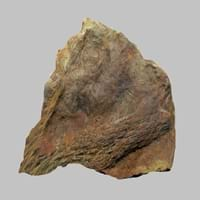Definition
Siltstone can be defined as a fine-grained sedimentary rock which mainly consists of consolidated silt
Slate is a fine-grained, foliated, homogeneous metamorphic rock derived from an original shale-type sedimentary rock composed of clay or volcanic ash through low-grade regional metamorphism
Discoverer
Unknown
Unknown
Etymology
From English word silt and stone and from Proto-Indo-European root sal and stainaz
From Old French esclate, from esclat (French éclat)
Class
Sedimentary Rocks
Metamorphic Rocks
Sub-Class
Durable Rock, Hard Rock
Durable Rock, Medium Hardness Rock
Group
Not Applicable
Not Applicable
Other Categories
Fine Grained Rock, Opaque Rock
Fine Grained Rock, Opaque Rock
Color
Brown, Red, Reddish Brown
Black, Brown, Buff, Green, Light to Dark Grey, Purple, Red, Shades of Blue
Durability
Durable
Durable
Scratch Resistant
Yes
Yes
Interior Uses
Decorative Aggregates, Interior Decoration
Bathrooms, Decorative Aggregates, Entryways, Floor Tiles, Flooring, Homes, Hotels, Interior Decoration, Kitchens, Stair Treads
Exterior Uses
As Building Stone, As Facing Stone, Garden Decoration
As Building Stone, As Facing Stone, Garden Decoration, Paving Stone
Other Architectural Uses
Curbing
Curbing
Construction Industry
Building houses or walls, Cement Manufacture, Construction Aggregate, for Road Aggregate, Making natural cement, Raw material for the manufacture of mortar
As Dimension Stone
Medical Industry
Not Yet Used
Not Yet Used
Antiquity Uses
Artifacts, Sculpture, Small Figurines
Artifacts, Monuments, Sculpture, Small Figurines
Commercial Uses
Raw material for the manufacture of mortar, Soil Conditioner
Blackboards, Commemorative Tablets, Laboratory bench tops, Standard material for the bed of Billiard table, Standard material for the beds of Pool and Snooker table, Tombstones, Used in aquariums, Writing Slates
Types
Not Available
Not Available
Features
Available in Lots of Colors and Patterns, Easily splits into thin plates, Generally rough to touch, High silica content, Very fine grained rock
Easily splits into thin plates, Surfaces are often shiny, Very fine grained rock
Archaeological Significance
Monuments
Not Yet Used
Used
Famous Monuments
Not Applicable
Data Not Available
Famous Sculptures
Data Not Available
Data Not Available
Pictographs
Not Used
Used
Petroglyphs
Not Used
Used
Formation
Siltstone is a type of sedimentary rock which is formed from fine rock particles. As the particles of eroded rock travel along with water, the edges of the rock are worn-out by water into a rounded shape.
Slate is a low grade metamorphic rock that is generally formed by metamorphosis of mudstone or shale, under relatively low pressure and temperature conditions.
Mineral Content
Calcite, Clay, Clay Minerals, Feldspar, Micas, Quartz, Sand, Silica, Silt
Apatite, Biotite, Chlorite, Feldspar, Graphite, Hematite, Kaolinite, Magnetite, Pyrite, Tourmaline, Zircon
Compound Content
Aluminium Oxide, CaO, Iron(III) Oxide, Potassium Oxide, MgO, Sodium Oxide, Silicon Dioxide
Aluminium Oxide, CaO, Iron(III) Oxide, Potassium Oxide, MgO, Sodium Oxide, Silicon Dioxide, Titanium Dioxide
Types of Metamorphism
Not Applicable
Burial Metamorphism, Cataclastic Metamorphism, Regional Metamorphism
Types of Weathering
Biological Weathering, Chemical Weathering, Mechanical Weathering
Biological Weathering, Chemical Weathering, Mechanical Weathering
Types of Erosion
Chemical Erosion, Coastal Erosion, Glacier Erosion
Coastal Erosion, Glacier Erosion, Water Erosion, Wind Erosion
Grain Size
Fine Grained
Very fine-grained
Fracture
Conchoidal
Splintery
Streak
White
Light to dark brown
Porosity
Highly Porous
Less Porous
Compressive Strength
Not Available
Cleavage
Not Available
Slaty
Specific Gravity
2.54-2.73
2.65-2.8
Transparency
Opaque
Opaque
Density
2.6-2.7 g/cm3
2.6-2.8 g/cm3
Specific Heat Capacity
Not Available
Resistance
Heat Resistant, Impact Resistant, Pressure Resistant, Water Resistant
Heat Resistant, Impact Resistant, Pressure Resistant, Wear Resistant
Deposits in Eastern Continents
Asia
China, India, Kazakhstan, Mongolia, Russia, Uzbekistan
China, India, Turkey
Africa
Namibia, Nigeria, South Africa
Not Yet Found
Europe
Austria, Denmark, Germany, Great Britain, Netherlands, Norway, Poland, Sweden, Switzerland, United Kingdom
Belgium, France, Germany, Italy, Norway, Portugal, Spain, United Kingdom
Deposits in Western Continents
North America
Canada, USA
USA
South America
Brazil
Brazil
Deposits in Oceania Continent
Australia
New South Wales, New Zealand
Not Yet Found
All about Siltstone and Slate Properties
Know all about Siltstone and Slate properties here. All properties of rocks are important as they define the type of rock and its application. Siltstone belongs to Sedimentary Rocks while Slate belongs to Metamorphic Rocks.Texture of Siltstone is Clastic whereas that of Slate is Foliated. Siltstone appears Rough and Slate appears Dull. The luster of Siltstone and Slate is dull. Siltstone is available in brown, red, reddish brown colors whereas Slate is available in black, brown, buff, green, light to dark grey, purple, red, shades of blue colors. The commercial uses of Siltstone are raw material for the manufacture of mortar, soil conditioner and that of Slate are blackboards, commemorative tablets, laboratory bench tops, standard material for the bed of billiard table, standard material for the beds of pool and snooker table, tombstones, used in aquariums, writing slates.










